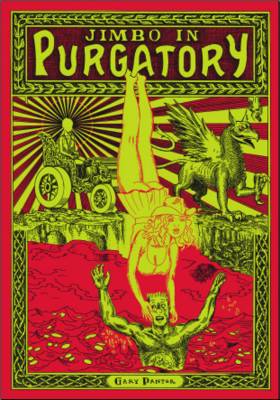POP PURGATORIOS


By a strange coincidence two recent pop cultural artifacts have recently hit the streets that update the work of 14th century visionary Dante Alighieri to a modern sensibility. The first is a record I've been looking forward to for some time, Mike Watt's new CD the secondman's middle stand. Watt's previous record, Contemplating the Engine Room, was a moving elegy both to his Navy father and his fallen Minutemen comrade D. Boon and introduced me to the work of Nels Cline, a guitarist of singular skill and imagination. The new CD, inspired by Dante's Inferno, transforms the hellride of Watt's own painful near death experience, his surgery and determined recovery into what can only be called *cringe* a rock opera. He replaces Cline's guitar with the B3 organ of Pete Mazich, which gives the piece a dramatic lower end that suits both Watt's spiel and his bass rumblings. It's an emotional catharsis, but if you've never heard Watt, the place to start is still Double Nickels on the Dime.
The second Dante "cover" is the new Gary Panter high end art object/comic book Jimbo In Purgatory. Panter was the first great exponent of punk rock style underground comix. He did many flyers for the early L.A. punk scene and his 1979 Rozz Tox manifesto argues that the avant guard is obsolete. He said artists should aesthetically infiltrate the mass media and ignore the elitist gallery scene--his then close pal Matt Groening seemed to take his advice. Philip K. Dick wore one of Panter's t-shirts promoting the manifesto. Later in the 80s, he did covers for Art Spiegelman's RAW and designed sets and characters for Pee Wee's Playhouse. His main continuing character over the years has been the ratty Jimbo, a goofy cartoon Hamlet existing in a postnuclear wasteland. Not really a storyteller, Panter has never been concerned with typical panel narration and prefers to blow up the narrative into fragments and pieces. He sees the page as a whole unit, so it's not surprising that he references Geo. Herriman, Jack Kirby, 60s poster art and religious iconography. Not bad, but still a little too pretentious and pricy for my liking. I'd rather be reading Jim Woodring.


0 Comments:
Post a Comment
<< Home